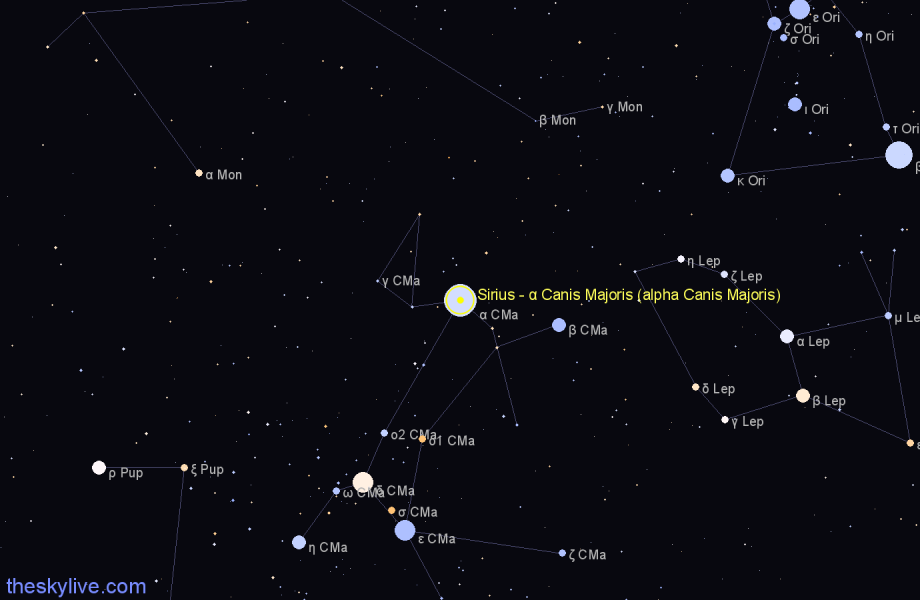
the
Rorschach Portal
Sirius
The Sirius constellation, also known as Canis Major, is home to Sirius, the brightest star in the night sky. Located approximately 8.6 light-years from Earth, Sirius is often referred to as the Dog Star due to its position in the "Greater Dog" constellation.
This binary star system consists of Sirius A, a main-sequence star, and Sirius B, a white dwarf. Notable in history, Sirius has been significant in various cultures, including the ancient Egyptians, who associated its rising with the flooding of the Nile.
The prominence of Sirius is due not only to its brightness but also to its relatively close proximity, making it a focal point for amateur astronomers and star enthusiasts alike.
Sirius A is a main-sequence star, about 25 times more luminous than the Sun and roughly twice its mass. Sirius B is a white dwarf, the remnants of a star that has exhausted its nuclear fuel. The two stars orbit around a common center of mass, with a period of about 50.1 years.
The visibility of Sirius varies throughout the year. It is typically most prominent in the evening sky during winter in the Northern Hemisphere and can be seen rising in the east just before dawn in the summer months.
Historically, Sirius has been significant in various cultures. The ancient Egyptians associated it with the goddess Isis, believing its heliacal rising heralded the annual flooding of the Nile, which was crucial for agriculture. In Greek mythology, Sirius was linked to the hunting dog of Orion and was often seen as a portent of heat and drought.
life in sirius B
If you’ve ever seen Tron, it’s similar to what life is like in Sirius B.

